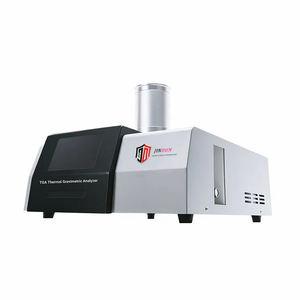TGA Thermogravimetric Analysis: An Overview
Thermogravimetric Analysis (TGA) is an essential analytical technique used to measure the amount and rate of weight change of a material as a function of temperature or time in a controlled atmosphere. This method provides vital insights into the thermal stability and compositional properties of materials, aiding scientists and engineers in understanding how substances respond to environmental conditions. TGA thermogravimetric analysis is particularly critical in the fields of materials science, polymers, pharmaceuticals, and more.
Types of TGA Thermogravimetric Analysis
TGA is categorized into several types based on the nature of the analysis and the context in which it is applied. Here are some types of TGA thermogravimetric analysis:
- Dynamic TGA: Measures weight changes in real-time as temperature ramps up or down.
- Isothermal TGA: Observes weight change at a constant temperature over a period.
- Derivative TGA (DTG): Analyzes the rate of weight loss to identify decomposition steps more clearly.
- Simultaneous TGA/DSC: Combines TGA with Differential Scanning Calorimetry for comprehensive thermal analysis.
Applications of TGA Thermogravimetric Analysis
The versatility of TGA thermogravimetric analysis allows it to conquer various industrial and scientific applications. Here are some notable areas where TGA analysis is imperative:
- Materials Characterization: Evaluates thermal stability, moisture content, and volatile matter calculation.
- Polymer Science: Determines decomposition temperatures and understanding polymer blends and composites.
- Pharmaceuticals: Assesses drug formulations and stability, ensuring safety and efficacy of products.
- Quality Control: Maintains product consistency and reliability during manufacturing processes.
Features of TGA Thermogravimetric Analysis
TGA thermogravimetric analysis stands out due to various features that make it a preferred choice for researchers and quality control labs:
- High Sensitivity: Can detect minute changes in weight, essential for accurate analysis.
- Temperature Range: Operates over a wide temperature range, suitable for multiple materials.
- Controlled Atmosphere: Analysis can be conducted in inert, oxidizing, or reducing environments for versatile testing.
- User-Friendly Software: Modern TGA instruments come equipped with advanced software for data analysis and reporting.
- Robust/Well-Built Design: Designed for reliability under varied testing conditions and prolonged use.
Advantages of TGA Thermogravimetric Analysis
Leveraging TGA thermogravimetric analysis offers numerous advantages that elevate research and quality assurance standards:
- Comprehensive Data: Provides detailed thermal profiles which are crucial for material assessment.
- Time-Efficient: Quick results minimize downtime in research and production processes.
- Cost-Effective: Reduces the need for multiple tests, consolidating data collection into one platform.
- Supports New Material Development: Aids in the formulation and enhancement of innovative materials through thermal characterization.














































